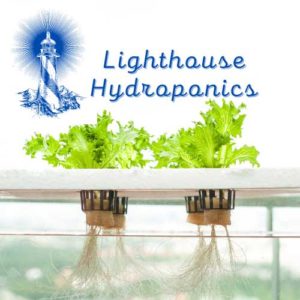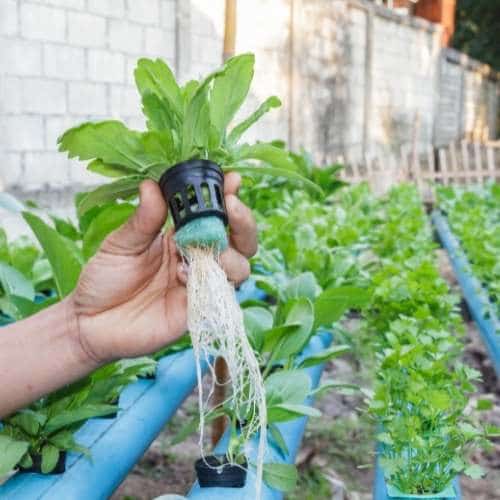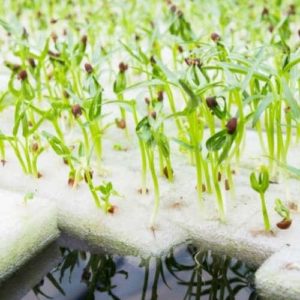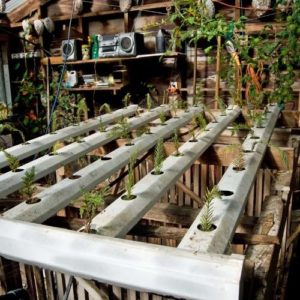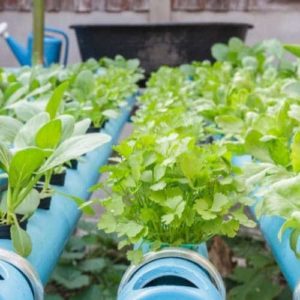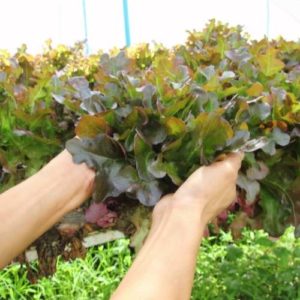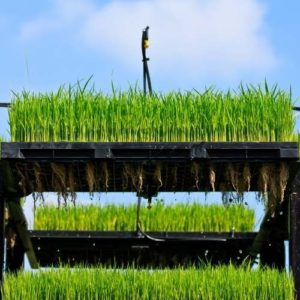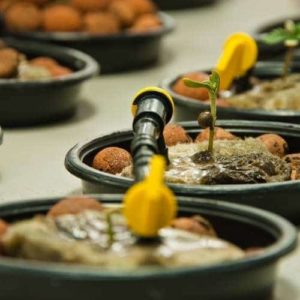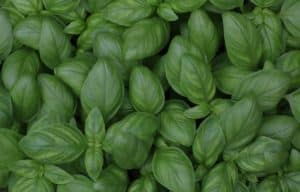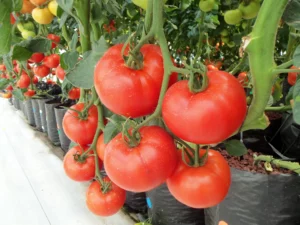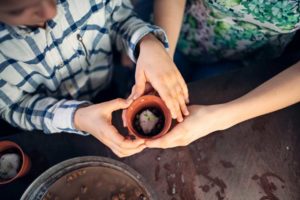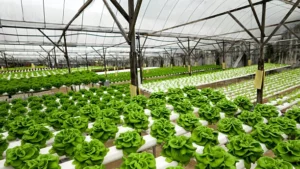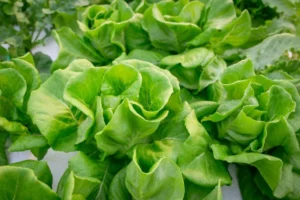To me, gardening is among the most relaxing hobbies I have. If you want an out-of-the-box, fascinating kind of gardening, then hydroponics is definitely it.
Before you start and put yourself into hydroponics, you should know that there are a few types of hydroponics, which differ from each other by design and maintenance requirements, so knowing them will allow you to choose the right one for your specific needs.
You can choose the type of hydroponics system for your garden based on your chosen plants, your means, and your personal preferences or sense of adventure (some are more complex and do call for the adventurous soul LOL).
The types of hydroponics include the Kratky Method, Deep Water Culture, the Wick System, Ebb and Flow, Nutrient Film Technique, Aeroponics, and Drip System. Each type of hydroponics comes with its benefits as well as challenges, which in turn have their own scientific and technological solutions.
Let’s go over them one by one and examine their advantages and challenges in depth:
Kratky Method
The Kratky Method is a very basic easily affordable type of hydroponic system. It is usually used by beginners just for fun or to give the whole concept of hydroponics gardening a try.
This method also requires low maintenance needs and fewer components. In the Kratky Method, you need a jar or tank and a nutrient solution.
Then, you put the plants on the areal part out of the solution so that the roots can be dipped into the solution. Make sure that the leaves and stems are out of the nutrient solution.
You can use a mesh pot, grid, or container. But if you want to get the best results, you should try using a vase with a narrow neck or a similarly shaped container.
As I mentioned above, hydroponics has some disadvantages, and this system is no exception.
The Kratky Method is a passive hydroponic system; this means that it doesn’t have a pump that can introduce additional nutrients into the water for the roots to feed on. Although it is a good option in terms of low cost and maintenance, it decreases your control when it comes to the feeding of your plants.
This system is only suitable for small gardens and small plants. It also doesn’t provide the roots with any extra aeration other than what they get directly from the air in the container. Depending on the shape and size of the plant, it can be challenging to top the nutrient solution. That said if you are only starting – this method can be simple and easy to get a sense of the concept of hydroponics before you delve deeper into the more elaborate systems.
Deep Water Culture
The Deep Water Culture is another simple type of hydroponic. It is considered historically the most classical method. It is sometimes called “the mother of all hydroponic systems”.
However, for reasons you’ll soon discover, it is not the favorite hydroponic method for a lot of gardeners.
In this hydroponic system, you need a grow tank to hold your nutrient solution, and an air pump to provide oxygen for the roots.
Thus, you will directly place the plant roots in the nutrient system to easily absorb the nutrients.
With a grow tank, you can successfully grow more plants. It is a step up from the Kratky Method. With this method, you can easily enrich the water with more nutrient solution when it gets dwindled and maintain the pH level to the required balance.
In Deep Water Culture, you only need a few components, which means you have lower costs to set up.
Additionally, there are fewer parts that can be damaged.
This hydroponic system also has root aeration, so you can save resources and reduce waste.
So, if you need a low-cost maintenance hydroponic garden, this method is a good choice.
On the other hand, it also has some disadvantages.
This method is not suitable for vertical gardens. It also contains heavy and bulky grow tanks. A simple air pump can’t provide your plants with good aeration. Furthermore, it is vulnerable to the development of root disease in dirty growing conditions.
Wick System
The Wick System is a simple hydroponic type that doesn’t need pumps, electricity, or aerators.
Here, you use a growing medium namely an inert, porous material, such as coconut coir, and expanded clay for holding the nutrient solution and releasing it slowly.
The best thing about this hydroponic system is that it can recycle the nutrient solution. You don’t need to use power since it doesn’t depend on technology or electricity. So, this is another affordable solution for your hydroponics garden.
When using the Wick System, you dip wicks into the growing medium and place the other ends in the grow tank. You can add a solution in the grow tank for the wick tips. Then, physics and nature will do the rest through capillary action. It is similar to the way plants move water in their stems and leaves to spread nutrient solutions slowly and regularly.
With this, the roots can absorb the solution from the reservoir naturally.
The Wick Method is not recommended for multi-layer and vertical gardens. Although it is an affordable and simple hydroponic system, it is susceptible to fungi, bacteria, and algae problems.
It is also not the best option for extensive gardens, crops, small herbs, and houseplants since it can’t provide the plants with the extra nutrient-rich water they may need.
Ebb and Flow
The Ebb and Flow system can regularly irrigate the roots for a short period. It is also known as Flood and Drain. With this hydroponic method, the plants are not continuously submerged or even in direct contact with the water; they can breathe without completely drying. The plants are placed in big grow beds filled with a growing medium such as Rockwool or perlite.
In this type of hydroponic system, you irrigate in cycles consisting of two phases: the dry and irrigation phases.
Ebb and Flow can offer the best aeration. More importantly, the nutrient solution on the roots is not stagnant. With this, you can significantly lower the chance of bacteria, alga growth, fungi, and pathogens in your garden.
You also have more control in watering and feeding your plants, and you can adjust the cycles to match the climate or the needs of your plants.
The Ebb and Flow hydroponic systems are ideal for most crops like root crops and plants that need higher aeration. It can work for different types of plants, including root vegetables.
The disadvantages of this method are mostly due to its complexity. It may have an elaborate setup and it requires a good irrigation system, timer, and quality reversible pump.
You also need to know the crops you grow and their humidity, watering, and nutritional needs.
In terms of technical advantages, the pump can get clogged on occasion and needs proper maintenance. Or it can also have a noisy pump which can get a little bothersome at times.
Nutrient Film Technique
The Nutrient Film Technique can be the best way to handle the aeration challenge.
In this hydroponic system, you use a thin film at the bottom of a deep tank, which allows the lower part of the roots to absorb water and nutrition while the upper part can breathe.
The best thing about this hydroponic system is that the nutrition solution is continuously recycled. It also needs less nutrient solution and water.
Whenever you want to check on the health of your plants, you can quickly inspect the roots. And it is easy to replace the growing medium. It is also among the most scalable types of hydroponics. It is easy to set up and perfect for commercial growers.
The Nutrient Film Technique also has its drawbacks. It is not ideal for big plants since the growing medium can’t support the roots. Keep in mind that the tanks in this method are commonly pipes, so if the roots grow bigger and thicker, it can stop the nutrient from reaching all the plants in the system. Another possible challenge is that the plants won’t have water and nutrition if the system breaks, so maintenance is crucial.
It is not the best hydroponics for plants such as turnips and carrots. However, it can still be suitable for leafy vegetables.
Aeroponics
Aeroponics has a simple concept although it is not the easiest method for a hydroponics system. In this method, the plants are suspended in the air and the nutrient solution is sprayed onto the roots of the plants.
You can grow various different plants in aeroponics so long as you have the proper setup.
Aeroponics is considered a futuristic, high-tech advanced hydroponic system. It has a simple concept wherein pipes hold the pressurized nutrient solution, which passes through nozzles and sprays on the roots through droplets.
The roots in an Aeroponic system get nutrients and moisture while they continue to breathe freely throughout the process.
It requires an enclosed space called an Aeroponics Chamber to insert the roots in the holes and hold them in with flexible rubber collars. This method can use two pressure systems: HPA (high-pressure system) and LPA (low-pressure system).
If you want a hydroponic system that can irrigate frequently and in short spurts, aeroponics can be the best gardening setup for you.
Aeroponic systems can offer the best aeration and require less nutrient mix and can produce higher yields compared to other hydroponic systems.
Another advantage of Aeroponics is that it is not constrained to shape, and can be laid out horizontally, or vertically like a tower. It can be an excellent system for vertical gardens where space is limited.
You can also recycle the nutrient solution. With aeroponics, you can lower the risk of infections since the plants don’t share a similar nutrient solution pool.
The challenge with Aeroponics is that it mainly depends on the pump to work well, so if you choose this method, make sure you check and maintain the system regularly.
Drip System
The Drip System is built to enable a homogeneous distribution of the nutrient solution. It can be a good hydroponic system for various plants, including fruit trees.
It can also provide the perfect aeration for the roots and gives you greater control over the amount of nutrient solution your plants receive.
Drip system only needs a lower nutrient solution, and most ready-made garden setups come with a recovery system for excessive nutrition solutions.
With this system, the roots of the plants are not in stagnant water. It is beneficial for the health of plants and reduces the risk of bacteria and rot. If you want a quiet hydroponic system, a drip system is for you.
The disadvantage of this system is that it is built with many pipes so you can expect some leakage and should be on the lookout for it. Fortunately, you can quickly and easily fix it if it occurs.
You also need to monitor the nutrient levels and pH balance. It doesn’t recirculate the nutrient solutions, which means a high waste level.
Conclusion
To sum it up, you can choose the best hydroponic system that is right for your plant’s needs. You can choose from the Kratky method, deep water culture, the wick system, ebb and flow, nutrient film technique, aeroponics, and drip system.
With the proper hydroponic system, you can conserve your resources when it comes to growing your plants. If you want low-cost and low-maintenance gardening, you can choose the Wick System, deep water culture, or nutrient film technique. Alternatively, if you like more advanced systems with powerful monitoring procedures, you can choose ebb and flow systems and aeroponics.
And most importantly, enjoy the process and your produce!
